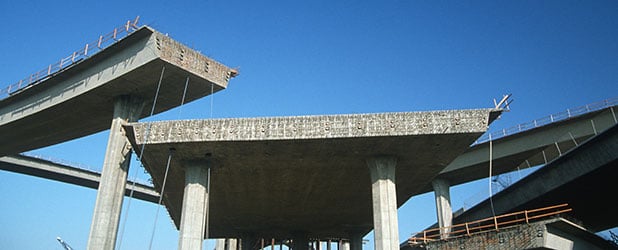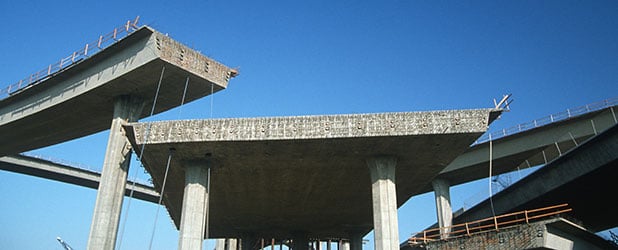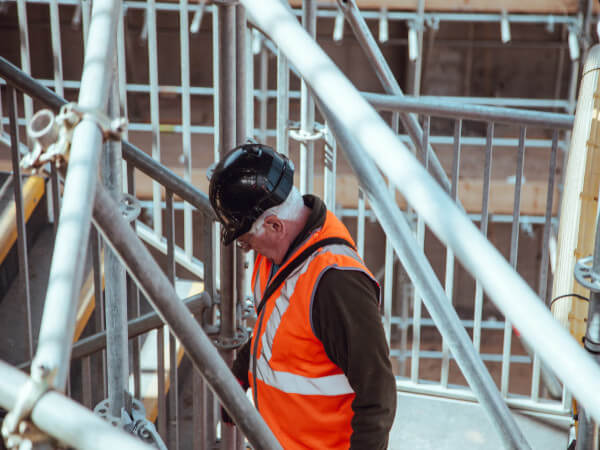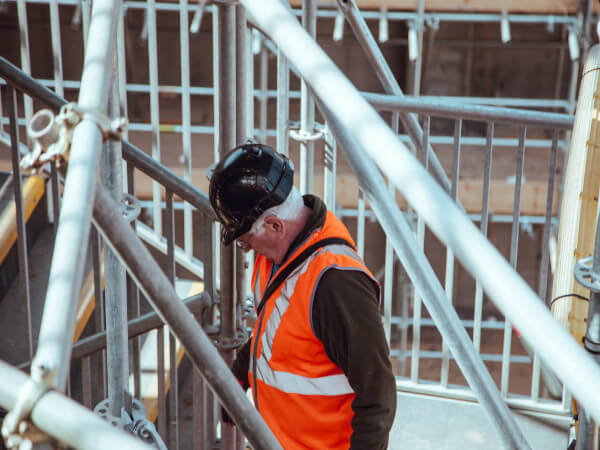
The latest (July 2021) U.S. put-in-place construction spending numbers from the Census Bureau are shown in Table 1 below.
![]()
Did you miss our previous article…
https://www.cmcconstruction.net/?p=1830


The latest (July 2021) U.S. put-in-place construction spending numbers from the Census Bureau are shown in Table 1 below.
![]()
Did you miss our previous article…
https://www.cmcconstruction.net/?p=1830


As we reflect on the last year, it’s worth a look back at some of Autodesk’s most notable blog posts from 2021. Doing so not only gives us a chance to reflect on the topics that made waves throughout the year, but also provides an indication of what’s in store for the next 12 months.
So, dig in—this roundup features an array of topics and articles. You’ll discover top industry stats, meet AEC’s most innovative leaders, learn about data and cost management tech, and discover innovations in sustainable construction.
Whether you’re new to the blog or a long-time follower of Digital Builder, you’re bound to find something read-worthy below.
Let’s dive in.
Construction facts/stats can be incredibly helpful when you want to identify benchmarks, industry trends, and market opportunities. To help you surface interesting construction data, we’ve compiled a list of 100 statistics that give you a general overview of the state of the AEC industry, particularly in the areas of construction labor, operations, and technology. Needless to say, if you’re looking for a credible source of construction info, this post is one of the best places to start. Read article.
In 2021, we released Autodesk’s annual 40 Under 40: Champions of Construction—a list of construction professionals doing remarkable things in their respective areas (and who happen to be under the age of 40). Sourced from hundreds of nominations from across the globe, this year’s list is comprised of a diverse group of individuals who demonstrated innovation, resilience, and creativity. If you’re looking to get inspired in your construction career and business, this list will certainly do the trick. View list.
It’s easy to agree that having a data strategy is important in the construction industry. But what exactly does a good data strategy look like? What does it mean? What does it take? To answer this, Autodesk and FMI published the report Harnessing the Data Advantage in Construction. This post does an excellent job summarizing the study’s key insights, and it offers advice on how to successfully launch a data strategy. Plus, the article comes with a nifty infographic featuring the report’s notable findings, making the info easy to understand. View report findings.
Reusing things that would otherwise go to waste is proving to be a better alternative to traditional methods of sourcing building materials. Shannon Goodman, Executive Director of Lifecycle Building Center, lends her expert insights on the topic. Lifecycle Building Center is an organization that salvages building materials and directs them back to the community. In this post, Shannon shares some actionable steps on how construction firms can be more sustainable in their building practices. Learn more.
The line “you can’t improve what you don’t measure” rings very true in the construction industry. Tracking the right KPIs is essential to ensuring that your projects are on track and that you’re meeting your objectives. This article serves as an excellent reference piece for the top KPIs you should be looking at. It lists the must-track metrics in areas like project safety, quality, performance, and employee management. You’ll also get tips on how to adopt, measure, and implement your KPIs successfully. Discover key metrics.
Technology is now a staple both in the field and in the office. As more innovative tools carve their spot in the AEC industry, you need to ensure that you’re leveraging tech correctly. Jim Lynch, Senior Vice President & General Manager of Autodesk Construction Solutions led the Construction Keynote at Autodesk University 2021. This article breaks down the top takeaways. He highlights three ways that Autodesk can help you do just that. You’ll learn how Autodesk is connecting your data and how it streamlines much-needed collaboration. You’ll also learn the difference between a technology partner and a technology provider—and why one is favored over the other. Read key takeaways.
This post is actually from 2020, but continues to be a popular read in 2021 as cost control has become a unique challenge these last two years. Pandemic aside, this article’s relevance isn’t surprising considering cost overruns are all too common across construction projects globally. With just a third of projects coming within 10% of the budget, it’s no wonder so many AEC pros are seeking information on how to get costs under control. This post helps you do that by explaining the top 6 reasons that projects go over budget—and how to address them. Learn more.
Podcasts have grown in popularity over the past year, and for good reason—they offer a convenient way for listeners to consume information. Whether you want to learn about current events or are looking to listen to interviews with thought leaders in your field, there’s likely a podcast that has what you need. If you’re looking for construction podcasts to check out, this article lists the top 10 construction-related podcasts you should listen to. From shows that tackle technology to podcasts that examine design and architecture, this post is packed with insightful and entertaining podcasts for anyone in AEC. Listen and learn.
Wessex Water is one of the leading water and sewage companies in England and Wales. In addition to providing their communities with excellent water services, the company also strives to manage the growing environmental, financial, and consumer demands facing the industry. To do that, Wessex Water is investing in construction technology and optimizing its workflows to improve project collaboration and outcomes. This post details the company’s journey and key learnings from its initiatives. Check it out and see if you can apply Wessex Water’s lessons in your own projects.
Managing project stakeholders, data, budgets, and several other moving parts is a challenge that many construction teams face. At Autodesk, we’ve found that the best way to stay on top of projects is to centrally manage its components from one platform. Autodesk Build, a solution we launched in 2021, enables you to do just that. Read this article to learn more about Autodesk Build and the specific ways that it helps you and your teams function more smoothly and deliver better outcomes.
We hope this roundup gives you plenty to think about and sheds light on insights you can use to plan for 2022 and beyond. If you’d like to discuss these findings, trends, and other topics, please join us in The Big Room, Autodesk’s community of construction professionals.
The Big Room gives you the opportunity to connect with like-minded folks to ask questions, discuss construction ideas, and more. See you there!
The post Our Top 10 Construction Blogs from 2021 appeared first on Digital Builder.
Did you miss our previous article…
https://www.cmcconstruction.net/?p=1827


Canada’s foreign trade picture brightened considerably in June. The nation’s merchandise trade balance recorded its biggest surplus since before the 2008-2009 recession. Furthermore, there have now been four surpluses in the past six months. During the decade prior to this year, Canada’s monthly goods trade balance spent a lot of time below the zero x-axis (Graph 1). (‘Merchandise’ trade is a fancier way of saying ‘goods’ as opposed to ‘services’ trade.)
![]()
Did you miss our previous article…
https://www.cmcconstruction.net/?p=1823


The accompanying tables show the top 10 major upcoming Midwest and Northwest construction projects in the U.S. They are all in the planning stage and are mainly new projects, but may also involve additions and/or alterations.
![]()
Did you miss our previous article…
https://www.cmcconstruction.net/?p=1819


A Special Message from Doug Dockery, CTO, on Platform Security
![]()
Did you miss our previous article…
https://www.cmcconstruction.net/?p=1815


ConstructConnect announced today that November 2021’s volume of construction starts, excluding residential work, was $30.4 billion (see shaded green box, bottom of Table 8 below), an increase of +1.7% compared with October 2021’s level of $29.9 billion (originally reported as $28.8 billion).
![]()


In an era of rising costs and new technology, here’s how to bring more accuracy to construction estimating.
When it comes time to kick off a new construction job, an accurate estimate is the first step toward project success. The best approach to the construction estimating process begins with a thorough understanding of the project, along with a team of estimators who are deeply familiar with the nuances of quality construction estimating. For contractors and business owners, this stage of the project can have a pronounced impact on your bottom line. According to a survey conducted by QuickBooks and TSheets, one in four construction companies would go out of business if they made just two or three inaccurate estimates.
As a resource, here are a few tools that will guide your team toward a successful construction estimating process, creating opportunities for new business and exceptional client relationships.
While construction estimates are hardly always accurate to the cent, successful projects start with accurate and detailed estimation efforts. If not, there can be ethical and even legal risks. For instance, in March, the SEC launched a federal probe into two leading construction contractors to uncover why their estimates were inaccurate.
The initial construction estimating process for large-scale projects usually begins with a specific team, known as estimators. They estimate the project by gathering proposals, plans, specifications, and related documents.
Overall, an estimate is the total price of the project, which includes all expenses, like materials and labor. It’s also important to note that there’s a common misconception around the definition of a bid vs. an estimate. A bid is a finalized offer in order for the construction project to proceed. In a bid, a contractor often specifies a construction price and project timeline. Usually, an accurate estimate is set before you place a bid.
Similar to the estimate vs. bid distinction, there are several terms to understand and keep in mind throughout the estimation process. In construction, these nuances are important to not only explain your approach to the client, but to speak internally with vendors, partners, and others in the industry. Simply put, speaking the “same language” can help minimize confusion and mistakes.
First, there’s a quantity takeoff. This is when the cost estimator accurately identifies and develops the required materials for the project. This step is crucial, as without an accurate takeoff, there will be inaccuracies in the project. Next, the estimator will use their experience to estimate the labor hours required to complete the project. A key factor in determining the labor hours is correctly identifying the relevant labor rates, which are the basic wages for all team members. The cost estimator will also consider overtime work and extra hours.
As the estimation process progresses, the team will begin to collect material prices and equipment costs. Both of these vary significantly, as the cost of a given material fluctuates greatly depending on market demand and supply, the quantity needed, the cost of transportation to the building site, and exchange rates. More importantly, the cost of equipment will include the capacity of the equipment and the cost differential if the equipment needs to be rented. In the unprecedented time of COVID-19, as shipping and logistical operations are delayed, this has become imperative to uncover and represent factually.
The estimator will also gather all subcontractor costs, including the price of the labor, materials, and equipment required by additional specialty contractors on the project. Lastly, to ensure all costs are covered in an accurate estimate, indirect costs need to be considered. This can include temporary on-site utilities, land acquisition, design fees, and office support.
As technology continues to guide the latest and greatest in construction, the process of construction estimating has drastically improved due to more innovative tech platforms.
One key industry innovation is the cloud-based estimation tool. This allows an estimator to utilize a 2D or even 3D model to predict the needs of a construction project. The cloud-based approach provides more accuracy by uncovering the true engineering needs of a project. This accuracy, in turn, offers the client a fuller picture of the estimation, and gives the estimation team a helpful tool to better present the construction job.
Another cloud-based approach involves executing a takeoff within the cloud for an estimation. Integrating the takeoff into the cloud allows for more security and collaboration among team members. It also eliminates the headaches of using license-based tools.
In addition, you can implement company-wide data standards by setting up project templates in the cloud that include takeoff types and classification systems. All of which enables consistency across your teams and project data.
And lastly, when estimators have access to the right information at the right time—i.e. centralized in the cloud—they’re capable of generating a competitive bid. Leveraging a cloud-based document management system for your quantification workflows helps ensure that all your estimators are working from the latest issued drawings and models. A major benefit there is that they are not missing critical information to create a competitive estimate.
A truly innovative approach to estimation is known as the automated approach to a takeoff. When takeoffs are automated, estimators are freed up from the tedious task of manually counting supplies. They can easily visualize quantities in 3D to understand scope, complexity, and design intent. For example, one company was able to leverage a 3D model to get the correct number of doors needed for a project in a matter of minutes—a process that would have taken them over a day using a 2D drawing.
Automation as a tool is key in the preconstruction phase, as it allows a contractor to jumpstart the launch of a new job seamlessly, without getting bogged down by the nuances of an ordinary takeoff.
More and more, automation is offering firms a competitive advantage. They’re able to work faster and take on jobs that may have BIM requirements they weren’t able to meet in the past. In other words, automation allows contractors to access a whole new set of customers. And with the time-savings you get from automation, you can bid on more jobs and win more work.
Teamwork is an essential first step in construction estimating, and this process fails if there’s not a culture of transparency and collaboration between the contractor, client, and estimator. Justin Davis, Executive Vice President of Preconstruction, Estimating, and Business Development at Walker Engineering explains the importance of collaboration during the estimation process this way: “Customers expect and trust [contractors] to fill in all the gaps, make sure that they’ve got their costs covered, and make sure that when we sit in a room, there’s transparency.”
Allowing teams to manipulate data and have visibility into scope removes oversight or double-ups on takeoffs. This is best accomplished in cloud-based takeoffs where data is centralized. With streamlined teamwork as a top priority, the goal should be to make estimating a collaborative process.
Lastly, the advent of data connectivity is the cornerstone to improving the accuracy of your construction estimate. When data lives in silos, information can get lost, which increases the likelihood of inaccurate estimating. More importantly, centralized data and information ensures more accuracy and facilitates a seamless transition from one project phase to the next.
It is truly a new era in creating an accurate and reliable construction estimate—contractors and business owners just need to understand the technology and platforms available at their fingertips.
In construction, there’s nothing more important than delivering a quality, outstanding project that exceeds the expectations of your clients. This all begins with the estimate. And to build your estimate, you’ll need to identify the right quantities with an accurate takeoff. Your quantities, of course, will affect both cost and schedule, which will also be reflected in your estimate.
As the industry continues innovating, there are several resources to make your estimation process more accurate and helpful for your clients. Most importantly, an accurate estimate helps maintain your bottom line, as mistakes can be costly and sour reputations for future projects.
Looking to save time during estimating? Bid Board Pro saves the average estimator 8 hours per week by eliminating manual entry and consolidating everything needed to manage bids in one, easy-to-access place. Learn more.
The post Construction Estimating: 4 Winning Tips to Improve appeared first on Digital Builder.
Did you miss our previous article…
https://www.cmcconstruction.net/?p=1781

In early 2021 Deloitte was commissioned by the Autodesk Foundation to help identify the labour markets most vulnerable to technological disruption in the Asia Pacific region. The report, The Future of Work is Now: is APAC Ready? Identifies those most at risk and proposes interventions which can be scaled and adapted to different circumstances across our region.
The current COVID-19 pandemic, and the challenges it has brought, has accelerated digital trends. Heavy restrictions have been faced in Melbourne and Sydney throughout the year, and this has caused us to consider:
Figure 1: Number of people employed in Australia (‘000s)

Source: Australian Bureau of Statistics, Deloitte Access Economics
Figure 2: Job ads index, 100=decade average to Nov-19

Source: Australian Bureau of Statistics, Deloitte Access Economics
Considering the last point, finding and retaining skilled workers has been an ongoing concern. The number of job advertisements as reported by the Australian Bureau of Statistics and Deloitte Access Economics have risen highly in all sectors and stayed at high levels, and unemployment is at an all-time low in Australia.
Figure 3: Number of unemployed persons per job vacancy

Source: Australian Bureau of Statistics, Deloitte Access Economics
This year we have experienced a dual labour market where some could not work due to restrictions, while some are adjusting to new roles, and many businesses still could not fill vacancies. In October this year, Infrastructure Australia released their Infrastructure Market Capacity report which stated that up to 105,000 well-paid jobs risk being unfilled by 2023 due to global competition for workers.
Infrastructure Australia forecasted a shortage of 70,000 engineers and architects, 15,000 structural and civil trades, and 19,000 Project Managers. This makes the sector one of the hardest hit, with looming skills gaps on public projects across the country, putting more pressure on already-stressed budgets and time frames. This impact has a knock-on effect to other parts of the commercial construction industry as the sector aims to become an industry of first choice for entrants.
The Future of Work report covers three core components:
Construction topped the list as the industry most likely to be hardest hit by the coming wave of automation. The industry had the highest proportion of routine, manual tasks, with a high potential for automation.
Figure 4: Impact Index result by industry

It’s also noted that Australia is the most prepared and second least at-risk country from automation. Its investment in its future workforce is a significant contributor to this result. However, as noted above, the future workforce is still at risk. Continued investment is needed, particularly in upskilling, to stay in this position and help ensure our country remains competitive in the region.
Figure 5: Potential impact of automation and preparedness, by country

To be in the best position to benefit from automation, individuals, businesses, countries and regions need to focus on three key opportunity areas. These are identified as foresight and mindset, skills and learning, and access and inclusion.

Based on The Future of Work research, there are four key insights about how to address the skills gap:
There are opportunities available that organisations like Autodesk can address with industry to close the gaps identified in the research, taking into account current market conditions. At Autodesk, we approach it with three things in mind:
To support training, Autodesk launched our new learning and credentialing platform at Autodesk University last year. The platform is designed to make training personalised and transformative. Workers can get credentials on their terms and timelines and build personalised learning pathways that help them develop the skills they need.
Autodesk credentials make learning more accessible, measurable, and relevant for customers. Industry recognised certifications help workers to market their job readiness. Whilst the sector has foundational entry-level qualifications, the opportunity for partnerships that support the business with micro-credentials enables practical courses that can address the needs of the company.
Autodesk Command Map is designed to watch how you use the Autodesk products, highlight the areas in which you’re proficient and the areas you need to improve on. It also offers benchmarks against industry standards to help you focus in the right areas and to use the tool to its full potential to reap the rewards of the investment.
This takes many forms and is arguably the most complex because it takes many different parties to address the systemic problems. According to the World Economic Forum, a collaborative effort could reach 77% of all workers that need reskilling – versus just 25% if the private sector were to do this alone.
At Autodesk, we believe that automation technology, including artificial intelligence, will be required to help businesses and society meet the demands of our growing urbanisation and global population. We recognise that technological change will drive transformation – and we are committed to helping companies and their employees adapt and thrive. We believe employees prosper by adopting a mindset of continuous learning, acquiring the most in-demand skills and securing the most fulfilling roles. We are committed to collaborating with employers, the start-up community, the vocational education and training sector, universities and government organisations to advance workforce adaptability, as we invest in solutions and policies that complement employers and employees to adjust in an ever changing environment.
Autodesk can support you and your organisation. The Future of Work report can be accessed here.
The post The Future of Work is Now: Is the Construction Industry Ready? appeared first on Digital Builder.


ProEst will join Autodesk to strengthen its preconstruction offering and connect the project cost lifecycle within Autodesk Construction Cloud
SAN FRANCISCO, Calif., Dec. 16, 2021 – Autodesk, Inc. (NASDAQ: ADSK) today announced that it is acquiring ProEst, a cloud-based estimating solution that enables construction teams to create estimates, perform digital takeoffs, generate detailed reports and proposals and manage bid-day processes. Autodesk plans to integrate ProEst with Autodesk Construction Cloud, a comprehensive construction management platform connecting teams, data and workflows across the entire building lifecycle. The acquisition will strengthen Autodesk Construction Cloud’s preconstruction offerings and empower construction teams to manage all their critical preconstruction and construction workflows on one platform.
ProEst, whose customers include Geisinger, O’Brien Construction, Vantis and Oswald, translates project scope quickly and easily, turning drawings, specifications and models into material, labor and equipment costs. As a result, teams are not only able to supercharge the estimation process and build stronger bids, but also minimize project risks and heighten their chances of winning work. With ProEst’s cloud-based solution, customers can also access estimating information from anywhere, at any time, and import third-party cost databases to streamline estimation workflows. The acquisition of ProEst will complement Autodesk Construction Cloud’s best-in-class cost management capabilities and allow teams to track costs against estimates and provide greater visibility to increase the probability of project success.
“We pride ourselves on delivering quality projects safely, within budget and in a timely manner,” said Luis Berumen, vice president of innovation and technology, Bartlett Cocke General Contractors. “Autodesk Construction Cloud helps us manage our projects by enhancing collaboration across various phases and workflows and adding ProEst’s cloud-based estimating capabilities to the mix will further our ability to deliver quality projects efficiently.”
“ProEst enables us to produce estimates faster, consistently and more accurately throughout the design process and in collaboration with our partners, thereby improving overall efficiency” said Manny Innamorato, chief information officer, New York City School Construction Authority. “As a public entity, our mission is to build and modernize New York City’s schools in a responsible, cost-effective manner while still achieving the highest standards of excellence in safety, quality and integrity. With Autodesk Construction Cloud and ProEst now joining forces, we look forward to connecting our estimation data more seamlessly with our downstream construction workflows so we can stay on track and deliver on our mission in a more streamlined manner.”
ProEst will join Autodesk Construction Cloud’s existing portfolio of solutions, further enabling teams to reduce rework, improve productivity, increase automation and accelerate project delivery. Autodesk Construction Cloud solutions include:
“Estimation significantly impacts downstream construction workflows, but is often a disconnected and manual process, which creates room for errors that can lead to cost and schedule issues later in a project lifecycle,” said Jim Lynch, senior vice president and general manager of Autodesk Construction Solutions. “Our acquisition of ProEst will allow construction teams to connect accurate estimates with the rest of their project data to minimize the risk of cost and schedule overruns and drive successful project outcomes. ProEst shares our vision for digital transformation in construction and we look forward to bringing their leading estimating solution to Autodesk Construction Cloud.”
“Our goal has always been to reimagine the construction estimating process and offer the most advanced functionality possible,” said Jeff Gerardi, ProEst founder and CEO. “We have enabled teams to move away from paper documents and spreadsheets and, thanks to our cloud-based platform, break down on-premise software silos with seamless integration. Autodesk’s vision of connecting construction from end to end is one we fully believe in, and we’re excited to join an outstanding preconstruction offering to deliver on that vision.”
In recent years, Autodesk has made significant investments in construction technology innovations, including Aurigo Software’s capital planning tools and Bridgit’s workforce allocation and resource planning solution. Autodesk also acquired Assemble, BuildingConnected, PlanGrid and Pype in acquisitions totaling more than $1.1 billion.
Business Outlook
The transaction is subject to customary closing conditions and is expected to close during Autodesk’s fourth quarter of fiscal 2022, ending January 31, 2022. The acquisition will have no material impact on Autodesk’s fourth quarter and fiscal year 2022 guidance presented on November 23, 2021.
About Autodesk
Autodesk is changing how the world is designed and made. Our technology spans architecture, engineering, construction, product design, manufacturing, media and entertainment, empowering innovators everywhere to solve challenges big and small. From greener buildings to smarter products to more mesmerizing blockbusters, Autodesk software helps our customers to design and make a better world for all. For more information visit autodesk.com or follow @autodesk.
Media Contact
Stacy Doyle
503-330-6115
[email protected]
Investor Relations Contact
Simon Mays-Smith
415-746-0137
[email protected]
Safe Harbor Statement:
We may make statements regarding planned or future development efforts for our existing or new products and services. These statements are not intended to be a promise or guarantee of future delivery of products, services or features but merely reflect our current plans, which may change. Purchasing decisions should not be made based upon reliance on these statements. The Company assumes no obligation to update these forward-looking statements to reflect events that occur or circumstances that exist or change after the date on which they were made.
Autodesk, the Autodesk logo, Autodesk BIM Collaborate, Autodesk Build, Autodesk Construction Cloud and, BuildingConnected are registered trademarks or trademarks of Autodesk, Inc., and/or its subsidiaries and/or affiliates in the USA and/or other countries. All other brand names, product names or trademarks belong to their respective holders. Autodesk reserves the right to alter product and services offerings, and specifications and pricing at any time without notice, and is not responsible for typographical or graphical errors that may appear in this document. © 2021 Autodesk, Inc. All rights reserved.
The post Autodesk to Acquire Cloud Based Estimating Company ProEst appeared first on Digital Builder.

Khatib & Alami (K&A) is a multidisciplinary urban and regional planning, architectural and engineering consulting company operating across the Middle East, Africa, South-East Asia and Europe. With more than five decades of experience and expertise within the architecture, engineering, and construction industry, K&A have worked on some of the world’s most challenging projects.
As a sector that has seen its greatest evolutions in the past decade, K&A were amongst the first companies to truly adopt digital and BIM as part of its bid to be more time and cost efficient, while providing a higher standard of output for its clients. As a major multinational working on a range of multidisciplinary projects, K&A are required to collaborate with multiple different stakeholders both internally and externally. They recognised that they would need to centralise project data and create one single source of truth when it comes to project documentation to support them in managing the sheer volume and range of ongoing projects across their many different design centres. This would mean their project teams would reduce the amount of time they spent searching for, uploading, and downloading project information. They also wanted to reduce their dependency on local servers and move to a way of working that would enable them to form more collaborative partnerships with their supply chain partners.
By leveraging cloud collaboration, centralised and consolidated data for each project was open to the full range of necessary stakeholders, which in some cases went as high as 200 project team members across a number of different organisations. As a result, knowledge sharing and a comprehensive understanding of cloud collaboration and its features became more intrinsically linked to K&A’s culture. Dr. Ahmad Faeq, Senior Director for Projects Knowledge Management and Operational Excellence reflects:
“Since we started the transition to digital, we embedded technology implementation as part of our knowledge management. Based on this, we created communities of practice which became the platform to train our teams how to use cloud collaboration tools more effectively. As a result, knowledge management is now at the heart of the company, which interconnects with everything else.”
For many companies, the concept of working remotely was only implemented because of the pandemic. For K&A, however, its early-stage adoption of BIM, coupled with their multinational design centers in Cairo, Beirut, UAE and Bangalore, meant that remote working was already well underway.
“We were already using Autodesk’s Construction Cloud remotely to drive strong collaboration between our design centres, so it was a fairly smooth step when the transition to work from home became necessary,” commented Micheline Nader, Senior Project Engineer, BIM manager – road & highways.
“Before cloud collaboration tools, you were unable to work from home or remotely effectively. If we were required to do either, we were unable to access the same model, meaning any changes made would have to be saved and pasted onto the local server the following day,” recalled Yasmina Kridly, BIM Manager and Design Architect. “Since implementing Autodesk’s cloud solutions, our team can access the same model in real time, a feature that has given us a strategic advantage during the pandemic. Overall, it has enhanced our troubleshooting and submission processes by up to 90%.”
Where previous work required printed PDFs and stacks of paper stored across several locations, the integration of working in a cloud environment not only meant a faster, more centralised way to share accurate data, but an environmentally-friendly reduction in year-on-year printing from 2019 – 2020 by around 50 – 60%.
Thanks to K&A’s existing movement towards digital infrastructure, and spurred on by the pandemic, cloud collaboration soon played a centralised role in several projects resulting in K&A investing in more licenses and company-wide familiarisation.
“As the benefits of Autodesk Construction Cloud are significant, it is now mandated that all projects are stored on the cloud, regardless of scale or value. As one source of information, for each project, all design documents are stored in our common data environment for shared use, following ISO 19650 workflow. The client and stakeholders also have access to the project in a digital environment, which means the client can follow the work-in-progress model and provide feedback at an early stage,” commented Micheline Nader.

For Dr. Ahmad Faeq, the value of Autodesk’s Cloud solutions extend beyond traditional training and into a new era of ongoing development. “When we talk about BIM as the new standard, this is what I consider our first step. From here we’re able to build and develop. For example, we’re working on BIM and GIS integration to create what we call smart city management, where we link BIM with IoTs to create command centres for clients and landlords to monitor and manage their facilities during and after the construction projects. The ceiling isn’t fixed for us, so we will keep adding the technological components day after day.”
One of the challenges presented by the pandemic was the requirement to migrate project data into Autodesk’s cloud solutions for ease of development between parties, which simultaneously occurred while hiring new staff to cater for the demand. Fortunately, the data migration worked seamlessly, as did the adoption of the new staff who were able to familiarise themselves with the software and functionality.
Cited as one of the main reasons Autodesk Construction Cloud succeeded in reaching such a fast user-adoption rate is its carefully designed user interface, user experience and supplemental training provided by Autodesk. Reflecting on her earlier experiences with some predecessors of cloud solutions, Yasmina Kridly commented, “Since we started working with Revit more than a decade ago, every Autodesk product has consistently become more intuitive and mature, with a strong focus on the user experience. This is a feature which has been carried forward into Autodesk’s Construction Cloud solutions. While many other platforms require special training or expert advice, you are quickly able to get used to Autodesk Construction Cloud, even after using it for only a few hours.”

From a high-level perspective, Autodesk Construction Cloud’s ability to provide a collaborative platform for teams to interact and deliver has had a unifying effect on K&A’s teamwork culture, as highlighted by Dr. Ahmad. “Autodesk Construction Cloud was one of the tools we used to fortify and strengthen the communication within the project teams. This is where the real production of our investments happened.”
This sentiment is echoed by Yasmina Kridly: “The integration of Autodesk Construction Cloud has made a huge difference. Firstly, you can access it anywhere in the world. Secondly, we save a lot of time in transferring data between design centres. Today, I’m able to review and comment on documents immediately, meaning we’re saving a significant number of working hours as a business. This was all made possible thanks to the quick responses of the Autodesk team. Whenever we had a question, there was a solution suggested by the Autodesk team. When we first started using Autodesk Construction Cloud, it didn’t have all the features it has today. Through our team making suggestions, Autodesk were very quick to implement improvements and we’ve been able to fine tune our common data environment to be perfectly suited to our exacting requirements. One of the most useful was enabling real-time cloud collaboration during the design process, a feature that saves our team between 30 – 40% in time efficiency.”
Elaborating further, Dr. Ahmad added, “For a company like K&A where time is highly valuable, the saving of 30 – 40% isn’t just a win for the projects in hand, but also for the company which can utilise its skilled teams on other projects. Certainly, Autodesk Construction Cloud, along with our digitally enabled internal environment, has been a major driver in our digital transformation, which has been great for our productivity as a business.”
“Autodesk Construction Cloud is our solution for collaboration.”
—Micheline Nader, Sr. Project Engineer, BIM manager, Khatib & Alami
Summarising her experience, Micheline Nader commented, “Utilising Autodesk Construction Cloud has significantly improved decision-making and project performance leading to reliable, clash-free, sustainable projects that benefit from low maintenance costs, risks, and higher revenue streams. It has become a lifeline for using data, consuming content and engaging in digital applications.”
The post Khatib & Alami Achieves Time Savings of up to 40% Through a Cloud Collaboration Strategy appeared first on Digital Builder.